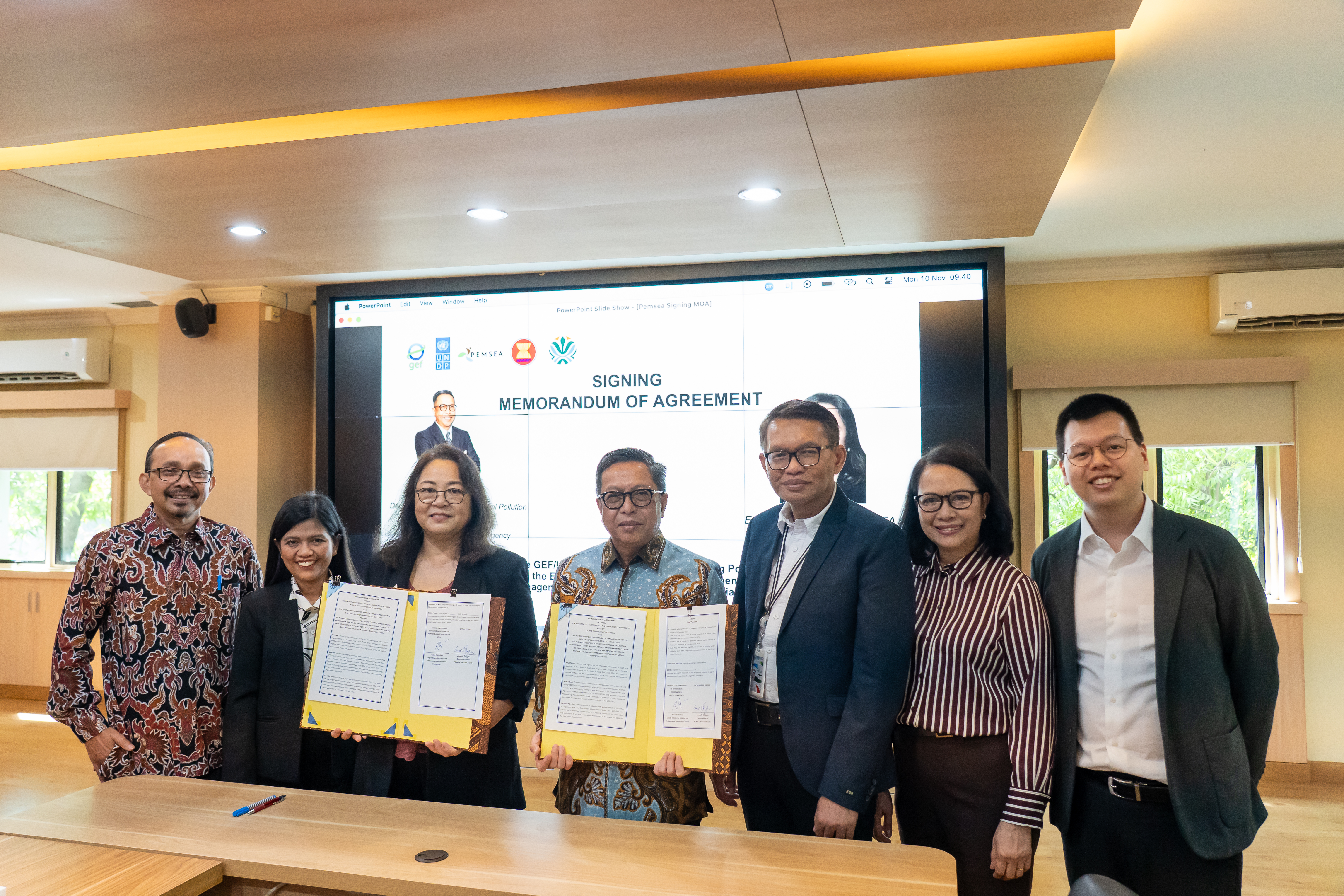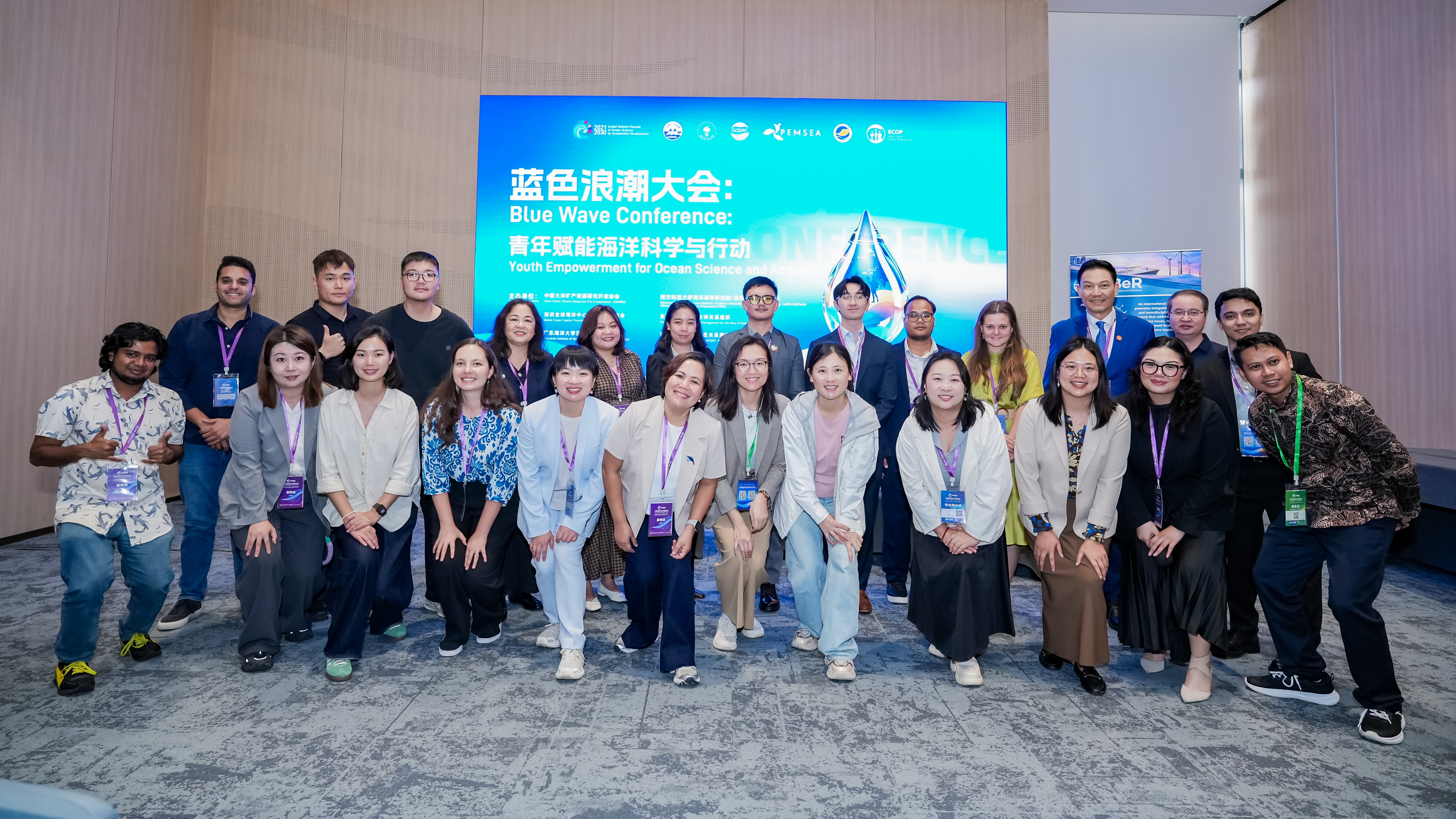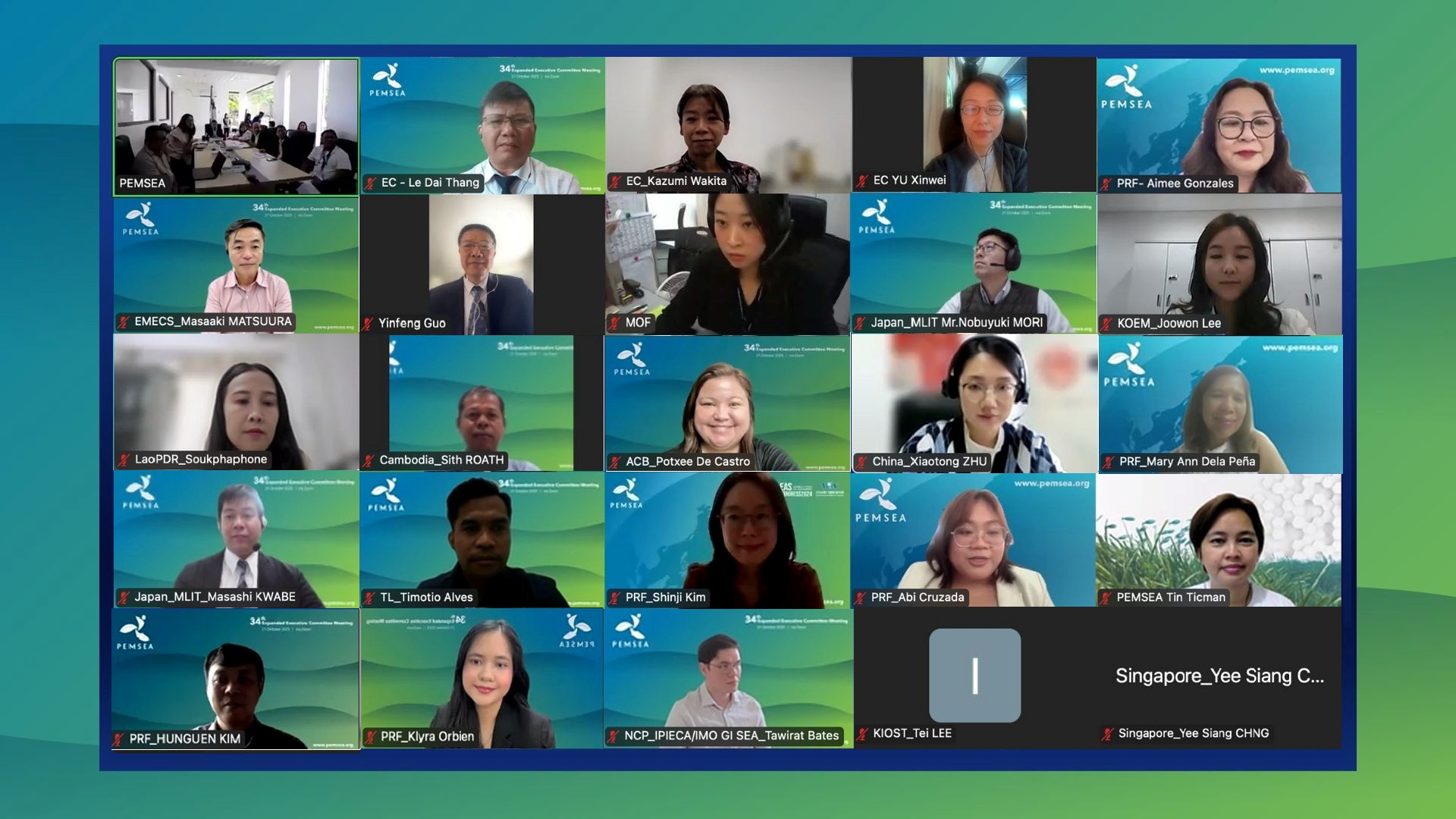Regional Collaboration Accelerates Blue Carbon Ecosystem Mechanism in the East Asian Seas
Wednesday, 11 June 2025
Representatives from nine countries across the East Asian Seas region convened in Haikou, China, for the second Blue Carbon Technical Working Group Meeting, advancing regional climate goals through the protection of vital blue carbon ecosystems.
The two-day meeting, hosted by Partnerships in Environmental Management for the Seas of East Asia (PEMSEA) and China's National Marine Hazard Mitigation Service, brought together more than 60 experts, policymakers, and researchers to develop frameworks for blue carbon ecosystem management.
The meeting addressed critical gaps in blue carbon monitoring and established pathways for creating a regional certification program that could potentially unlock climate finance for coastal communities while supporting nationally determined commitments under the Paris Agreement.
Regional Monitoring Networks Reveal Critical Data Gaps
The East Asian Seas region harbors some of the world's most extensive blue carbon ecosystems including mangroves, seagrass beds, and tidal flats —which serve as vital carbon sinks while providing coastal protection and supporting local livelihoods. However, a comprehensive regional survey conducted across 40 Integrated Coastal Management sites revealed significant differences in their state of ecosystem health and monitoring capacity.
The assessment highlighted that while mangrove forests are the most documented blue carbon ecosystems in the region, seagrass meadows and tidal flats remain severely understudied, particularly across Southeast Asia. This knowledge gap has resulted in potential over- or underestimation of actual carbon stocks, hampering accurate accounting at the national and local levels.
The findings underscore the urgent need for standardized methodologies and enhanced local capacity to generate robust, site-specific data that reflects national and local realities rather than relying solely on global estimates.
In her opening remarks, PEMSEA Executive Director Aimee Gonzales, emphasized the collaborative nature of the initiative, "Our regional blue carbon initiative must complement—not duplicate—the vital work that national governments and civil society organizations are already undertaking in building regulatory frameworks, mapping blue carbon ecosystems, and establishing national markets. The unique value of our collaborative effort lies in developing a regional hub that fosters coherence and cooperation."
Looking ahead, Gonzales emphasized that PEMSEA’s blue carbon program will expand to encompass certification processes, and across countries’ blue carbon trading. These elements will be crucial in creating sustainable pathways that support long-term conservation while providing economic incentives for coastal communities and stakeholders engaged in blue carbon ecosystem protection and management."
Hou Yuanqing, Deputy Secretary-General of the China Green Carbon Foundation, warned of the planet’s growing climate threat, “In today's world, we face many uncertainties. The crisis brought by climate change has profoundly affected each of our lives and influenced the future sustainable development and civilizational inheritance of every nation."
He emphasized that meeting the targets set by the Paris Agreement demands broad and meaningful international partnership, along with strong cooperation between neighboring nations that share common water resources, in order to address the worldwide challenges posed by climate change, the decline of biodiversity, and pollution.
Innovative Certification Framework Promises Premium Carbon Markets
As regional efforts to advance blue carbon initiatives gain momentum, the development of a Blue Carbon Ecosystem Services (BCES) Mechanism is emerging as an important part of East Asia’s strategy to harness the full value of coastal ecosystems. The mechanism, while currently under refinement, proposes a voluntary, region-wide framework to quantify, certify, and eventually trade ecosystem services from mangroves, seagrass beds, tidal flats, and other blue carbon habitats.
“The goal of the BCES Mechanism is to contribute to the sustainable development in the EAS region through the conservation and wise use of blue carbon ecosystems,” said Dr. Keita Furukawa, Chair of PEMSEA’s Blue Carbon Technical Working Group. Designed as a non-legally binding system, the mechanism is envisioned to serve as a guidepost for national
The BCES Mechanism recognizes that carbon sequestration is just one of many services provided by coastal ecosystems. Drawing lessons from Japan’s pioneering J-Blue Credit system which sells carbon credits at more than USD 460 per ton, roughly ten times the global average, the mechanism emphasizes a multi-benefit approach.
Brian Tsuyoshi Takeda of the Japan Blue Economy Association noted that layering multiple ecosystem service co-benefits onto a blue carbon credit framework significantly enhances its overall value and supports the creation of a pricing system capable of driving meaningful change.
Japan’s experience has shown that the value of fisheries, coastal protection, tourism, biodiversity, and water quality far outweighs carbon alone. In 2024, Japanese blue carbon restoration projects generated an estimated USD 411.6 million in ecosystem services, compared to only USD 4.2 million in carbon credit sales.
The Japanese model also highlights the importance of community involvement. More than 85 percent of its certified projects actively engage local fishers, reinforcing the role of local leadership towards project sustainability and resilience.
International Cooperation Essential for Climate Crisis Response
The meeting also discussed a tiered approach to blue carbon accounting that accommodates varying national capacities, from basic estimates using global data to highly detailed, site-specific monitoring. This accounting framework enables both advanced and emerging economies in the region to participate meaningfully in the mechanism.
Overall, the meeting secured its intended outcomes of having an agreed Blue Carbon Ecosystem Services Management Mechanism that underlines the following principles: promoting adaptive and integrated management and phased implementation; recognizing and respecting differences in national circumstances; acting collaboratively as partners; operationalizing gender equity and social inclusion and adopting the precautionary principle of not using scientific delays and uncertainties as an excuse for not taking necessary action.
The mechanism incorporates a standardized accounting protocol with a plan to pilot test the same and proposes a concrete implementation timeline, taking into account the varying levels of blue carbon ecosystem management, technical capacities and resources of PEMSEA country partners.
The working group recommendations will be presented for review and approval during the 17th EAS Partnership Council scheduled on 22-23 July 2025 in Manila, Philippines.



